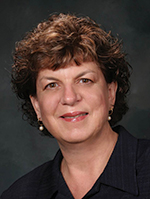Hands-on, Practical Guidance for Educators
From math,
literacy, science, equity, multilingual learners, and SEL, to assessment, school counseling,
and education leadership, our books are research-based and authored by experts
on topics most relevant to what educators are facing today.

Mathematize It! [Grades K-2]
Mathematize It! shares a reasoning approach that takes the initial focus off specific numbers and computations and put it on the actions and relationships expressed in the word problem.
- Grade Level: K-2
- ISBN: 9781544389851
- Published By: Corwin
- Series: Corwin Mathematics Series
- Year: 2020
- Page Count: 232
- Publication date: January 14, 2020
Review Copies
Review copies may be requested by individuals planning to purchase 10 or more copies for a team or considering a book for adoption in a higher ed course. Request review copy
Description
“This book is a must-have for anyone who has faced the challenge of teaching problem solving. The ideas to be learned are supported with a noticeably rich collection of classroom-ready problems, examples of student thinking, and videos. Problem solving is at the center of learning and doing mathematics. And so, Mathematize It! should be at the center of every teacher’s collection of instructional resources.”
John SanGiovanni
Coordinator, Elementary Mathematics
Howard County Public School System, Ellicott City, MD
Help students reveal the math behind the words
“I don’t get what I’m supposed to do!” This is a common refrain from students when asked to solve word problems.
Solving problems is about more than computation. Students must understand the mathematics of a situation to know what computation will lead to an appropriate solution. Many students often pluck numbers from the problem and plug them into an equation using the first operation they can think of (or the last one they practiced). Students also tend to choose an operation by solely relying on key words that they believe will help them arrive at an answer, which without careful consideration of what the problem is actually asking of them.
Mathematize It! Going Beyond Key Words to Make Sense of Word Problems, Grades K-2 shares a reasoning approach that helps students dig into the problem to uncover the underlying mathematics, deeply consider the problem’s context, and employ strong operation sense to solve it. Through the process of mathematizing, the authors provide an explanation of a consistent method—and specific instructional strategies—to take the initial focus off specific numbers and computations and put it on the actions and relationships expressed in the problem.
Sure to enhance teachers’ own operation sense, this user-friendly resource for Grades K-2
· Offers a systematic mathematizing process for students to use when solving word problems
· Gives practice opportunities and dozens of problems to leverage in the classroom
· Provides specific examples of questions and explorations for addition and subtraction of whole numbers as well as early thinking for multiplication and division
· Demonstrates the use of concrete manipulatives to model problems with dozens of short videos
· Includes end-of-chapter activities and reflection questions
How can you help your students understand what is happening mathematically when solving word problems? Mathematize it!
Author(s)

Kimberly Morrow-Leong
Kimberly Morrow-Leong is an adjunct instructor at George Mason University in Fairfax, Virginia, a part-time researcher at American Institutes for Research, and a consultant for Math Solutions. She is a former grade 5–9 classroom teacher, K–8 mathematics coach, and coordinator of elementary professional development for the National Council of Teachers of Mathematics (NCTM). She recently completed an elected term as vice president and 2018 program chair for NCSM, Leadership in Mathematics Education. She holds a BA in French language and a masters in linguistics (TESOL). She also holds an MEd and PhD in mathematics education leadership from George Mason University. Kim is the 2009 recipient of the Presidential Award for Excellence in Mathematics and Science Teaching (PAEMST) from Virginia. She is happiest when working with teachers and students, putting pencils down and getting messy with manipulatives!

Sara Delano Moore
Sara Delano Moore is an independent mathematics education consultant at SDM Learning. A fourth-generation educator, her work focuses on helping teachers and students understand mathematics as a coherent and connected discipline through the power of deep understanding and multiple representations for learning. Sara has worked as a classroom teacher of mathematics and science in the elementary and middle grades, a mathematics teacher educator, Director of the Center for Middle School Academic Achievement for the Commonwealth of Kentucky, and Director of Mathematics & Science at ETA hand2mind. Her journal articles appear in Mathematics Teaching in the Middle School, Teaching Children Mathematics, Science & Children, and Science Scope.

Linda M. Gojak
Table of Contents
Publisher's Acknowledgements
Table of Contents
Video List
About the Authors
Introduction: Why You Need to Teach Students to Mathematize
Problem Solving Strategies Gone Wrong
What is Mathematizing? Why Is It Important
Focus on Operation Sense
Using Mathematical Representations
Teaching Students to Mathematize
Building your Understanding of Operations and Related Problem Situations
Playing in the Mathematizing Sandbox: A Problem-Solving Model
Final Words Before You Dive
Chapter 2: Moving From Counting to Addition & Subtraction
Thinking About Counting, Addition, and Subtraction
Sandbox Notes: Explore Your Thinking
Students and Teachers Think About the Problem
The Development of Courting
Counting or Add-To?
Representing Problem Situations or Representing Answers
Using Children's Literature to Explore add-To and Take From Situations
Transcribe the Action or Relationship
Moving beyond Twenty
Students and Teachers Think About the Problems
Representing Problem Situations Multiple Ways
Translating the Five Relationships: Try It Out
Teaching Students to Use Concrete and Pictorial Models
Key Ideas
Try It Out!
Identify the Principle
Write the Problem
Change It Up
Reflect
Chapter 3: Add-To Problems: Locating the Change
Thinking About Active Addition Situations
Thinking About Active Addition Situations
Sandbox Notes: Explore Your Thinking
Students and Teachers Think About the Problems
Finding the Unknown, Three Story Structures
Story Structures: Implications for Teaching
Modeling the Active Problem Situation
Model Actions
Distinguish Pictures from Pictorial Representation
Identify Important Features
Creatively Meet Students' Needs
Using Children's Literature to Explore Add-To Problems
Make Predictions
Transcribe the Action or Relationship
Digging Deeper into Start Unknown Situations
Complicating Things: The Start Unknown Variation
Strategies for Making Sense of Start Unknown Problem Situation
Separating Computation from Operation
Moving to Equations
Key Ideas
Try It Out!
Identify the Problem Situation
Write the Problem
Change It Up
Reflect
Chapter 4: Take-From Problems: Locating the Change
Thinking About Active Subtraction Situations
Sandbox Notes: Explore Your Thinkin
Students and Teachers Think About the Problems
Finding the Unknown, Three Story Structures
Story Structures: Implications for Teaching
Modeling the Active Problem Situation
Digging Deeper into the Start and Change Unknown Situations
Moving from Concrete to Symbolic Representation
Using Children's Literature to Explore Take-From Situations
Create Another Outcome
Finding the Unknown Quantity
Key Ideas
Try It Out!
Identify the Problem Situatoon
Write the Problem
Change It Up
Reflect
Chapter 5: Part-Part-While: Understanding the Relationship
Thinking About Part-Part-Whole Situations
Sandbox Notes: Explore Your Thinking
Students and Teachers Think About the Problems
Defining the Part-Part-Whole Situation
Modeling Relationships vs. Action
Moving from Counters to Bar Models
The Special Case of Both Parts Unknown
Modeling Measurement Problems
A Note About the Commutative Property
Using Children's Literature to Explore part-Part-Whole Situations
Make Predictions
Moving to Larger Whole Numbers
Students and Teachers Think about the Problems
Modeling Measurement Problems
Writing Equations: Addition or Subtraction
Writing Equations: Addition or Subtraction
Finding the Equation in the Model
Key Ideas
Try It Out!
Identify the Problem Sitaution
Write the Problem
Change It Up
Reflect
Chapter 6: Additive Comparison: Another Kind of Relationship
Thinking About Additive Comparison Situation
Students and Teachers Think about the Problems
Early Years Comparisons
Additive Comparison Situations
Building Models for Comparisons
Students and Teachers Think About the Problems
Making Use of Models For Thinking
The Language of Comparisons
Language Can Get Tricky
Building Bar Models for Comparisons
Problem Posing as an Instructional Strategy
Using Children's Literature to Explore Additive Comparison Situations
Create Another Outcome
Key Ideas
Try It Out
Identify the Problem Situation
Write a Problem
Change It Up
Reflect
Chapter 7: Early Multiplication and Division: Patterns and Predictions
Thinking about Early Multiplicative Thinking
Sandbox Notes: Explore Your Thinking
Students and Teachers Think About the Problem
Modeling Even and Odd Numbers
Equal Groups Problem Situation
Using Patterns to Identify Even and Odd Numbers
Using Children's Literature to Explore Early Multiplication
Transcribe the Action or Relationship
Bringing Another Dimension with Arrays
Recognizing Area/Array as a Problem Situation
Building an Understanding of Arrays as Structures
Using Children's Literature to Explore Arrays
Transcribe the Action or Relationship
Setting the Stage Division
Equipartitioning
Two Models for Division
Using Children's Literature to Explore Early Division
Transcribe the Action or Relationship
Key ideas
Try It Out
Identify the Problem Situation
Write the Problem
Change It Up
Reflect
Chapter 8: Changing How You Teach Word Problems
Getting into the Mathematizing Sandbox
8 Shifts in Instruction for Building Students' Problem-Solving Skills
Do Word Problems for Sense-Making
Treat Context and Computation Separately
Create More and Varied Representations
Explore All the Work Operations can Do
Add Operation Sense Routines with a Variety of Problem Situatons
Listen to Students and Be Curious
Make Time for Mathematizing in the Sandbox
Guidance for Moving Forward: FAQ's
Finding Unexpected Mathematics in Stories
Reviews
“One of the most important goals of K–2 math education should be developing a robust understanding of addition and subtraction that can serve as a foundation for later learning. In Mathematize It! Morrow-Leong, Moore, and Gojak help teachers transform solving word problems from an activity focused on getting answers to an activity that supports students’ understanding of the mathematical principles of the operations. Teaching
suggestions are integrated throughout the book in a manner that allows teachers to make adaptations to meet the needs of their students. This book belongs on every primary grade teachers’ bookshelf.”
Linda Levi“One of the most important goals of K–2 math education should be developing a robust understanding of addition and subtraction that can serve as a foundation for later learning. In Mathematize It! Morrow-Leong, Moore, and Gojak help teachers transform solving word problems from an activity focused on getting answers to an activity that supports students’ understanding of the mathematical principles of the operations. Teaching
suggestions are integrated throughout the book in a manner that allows teachers to make adaptations to meet the needs of their students. This book belongs on every primary grade teachers’ bookshelf.”
Director, CGI Math Teacher Learning Center, LLC
“Kim Morrow-Leong, Sara Delano Moore, and Linda Gojak have written an essential guide for teachers of grade K–2 mathematics—both those new to the field and those with many years of experience. Read this book and learn how to help students develop a deep understanding of the mathematical principles behind each operation—in other words, effectively help students learn to mathematize problem situations.”Beth Skipper
Elementary Education Consultant, Reston, VA
“Help your students get into the messy fun of true problem solving, where the goal is to make sense of the world—not just arrive at an answer! Mathematize It! will engage you in the nuance and power of teaching through context. You’ll be surprised and delighted by the student examples, inspired by the teacher commentary, and ready to craft story problems that uncover the big ideas of your grade.”Berkeley Everett
UCLA Mathematics Project (University of California, Los Angeles Mathematics Project)
“Mathematize It! is a must-have resource for teachers and teacher leaders. In this comprehensive resource the authors not only introduce a new verb—mathematize—to the primary teacher’s vocabulary, they also provide teachers with a ‘go-to guide’ for teaching problem solving. Features such as the Mathematizing Sandbox as a problem-solving model, the emphasis on the use of multiple representations, and the integration of children’s literature provide teachers with instructional tools to help students develop a strong operation sense.”Latrenda Knighten
Elementary Mathematics Instructional Specialist, Baton Rouge, LA
“The list of generational math books to come along and truly synthesize what we know so far and what we need to know is a very short and exclusive list. Well, you can confidently add Mathematize It! to this collection. Written by three of the most respected math educators today, the book zeros in on that often poorly traveled journey between the question and answer in problem solving. Mathematize It! will be your go-to resource to install the mathematical play revolution in elementary classes everywhere!”Sunil Singh
Author of Pi of Life: The Hidden Happiness of Mathematics and Math Recess: Playful Learning in an Age of Disruption
“Mathematize It! is a must-read for anyone who has struggled to teach word problems and is ready to figure out what really works. The authors present a plethora of strategies that help students focus on the thinking part of the problem-solving process while gently helping the reader understand that so many of our ‘tried-and-true’ methods, such as key words, really don’t work. They help us realize that the real work of solving word problems is in the sense-making phase—once students have made sense of a problem, calculating the solution is the simpler part of the process.”Kimberly Rimbey
National Board Certified Teacher Co-Founder & CEO, KP Mathematics
“Mathematize It! addresses the complexity of problem solving more completely than any other individual resource. It is easy to say that we must teach students to ‘mathematize situations’ but this book helps us to actually help students learn to do it. The challenge and reflection pieces at the end of each chapter are a game changer for unveiling teaching opportunities, prompting discussion in your PLC, and moving this from a book on the professional shelf to a powerful tool to impact instruction.”Gina Kilday
Math Interventionist and MTSS Coordinator Metcalf Elementary School, Exeter, RI Presidential Award for Excellence in Mathematics and Science Teaching Awardee, Former Member of the NCTM Board of Directors
“Mathematize It! is a book that should be on the shelf of every classroom teacher and division leader who supports mathematics teaching and leading. This valuable resource helps educators to think about the what, why, and the how to make sense of word problems. It gives a framework and visuals on how to support teachers’ understanding around problem types and solving problems and excels in assisting teachers in how to make a commitment to teaching for greater understanding.”Spencer Jamieson
Past President, Virginia Council for Mathematics Supervision (VCMS), Mathematics Specialist for Virginia Council of Teacher of Mathematics (VCTM)
“This is a game changer . . . even after 20 years of supporting students and their sensemaking of word problems, I am thrilled to learn even more from this trio of authors. They offer practical suggestions, opportunities for practice, and relevant research in order to increase awareness of best practices surrounding word problems. The only key word in this case is MATHEMATIZE! To have this resource in your hands is to have an invitation to the ‘mathematizing sandbox’.”Beth Terry
Mathematics Coach, 2004 Presidential Award for Excellence in Mathematics and Science Teaching Awardee, Riffa Views International School, Bahrain
this clear and practical guide needs to be required reading and discussion fodder for every elementary teacher of mathematics. It’s just that clear, informative, and insightful!”
“This dynamic author trio brings years of classroom experiences to one of the central problems of teaching and learning mathematics: making sense of word problems. Focusing on the construct of ‘mathematizing’—drawing, constructing, describing, representing, and making sense of situations—Steve Leinwand
this clear and practical guide needs to be required reading and discussion fodder for every elementary teacher of mathematics. It’s just that clear, informative, and insightful!”
Principal Researcher American Institutes for Research, Washington, DC
“As our students begin to mathematize the world around them, it becomes extremely important that we listen to their thinking so that we can continue to move their understanding forward. What makes Mathematize It! such a useful tool for teachers is that it thoughtfully unpacks student strategies, which helps inform and guide our next move as a classroom teacher.”Graham Fletcher
Math Specialist, Atlanta, GA
“Mathematize It! engages readers deeply in the mathematics content through an easy-to-use visual analogy: playing in a sandbox. The authors have found a way to make problem-solving seem like a fun task—one that is akin to something we’ve all been doing forever: playing. Their clever and applicable problem-solving model of thinking provides a structure teachers can use to support students in tackling word problems and actually enjoying the process. It’s time for you to play in the sandbox and more importantly, Mathematize It!”Hilary Kreisberg
Director, Center for Mathematics Achievement Lesley University, Cambridge, MA Author of Adding Parents to the Equation
“The authors provide a detailed and practical guide on how to take a word problem, uncover the mathematics embedded in it, carefully consider representations, and use it all to solve the problem. The reader begins to realize that all models are not created equal. The authors’ careful attention to the nuances within mathematical relationships illustrates how mathematizing differs from answer getting, yet shows us that ideas like operation sense and computation are related. The authors’ plain-language explanations empower us to leverage those relationships in order to help students become better mathematicians.”Paul Gray
Chief Curriculum Officer, Cosenza & Associates, LLC Past President, Texas Council of Teachers of Mathematics NCTM Representative for NCSM: Leadership in Mathematics Education
“I can’t wait to use Mathematize It! in my work with teachers and students! The excellent examples, including actual student work and teacher commentaries, highlight the complexity of the problem situations in a way that is clear and usable for classroom teachers and for those of us who support them. The focus on operation sense, understanding the role that each quantity plays, and connecting representations to problems makes this a must read for anyone helping students become successful problem solvers. I especially appreciate the inclusion of non-whole-number examples!”Julie McNamara
Associate Professor, Author of Beyond Pizzas & Pies (With Meghan Shaughnessy) and Beyond Invert & Multiply, California State University, East Bay, Hayward, CA
“This book is a must-have for anyone who has faced the challenge of teaching problem solving. The ideas to be learned are supported with a noticeably rich collection of classroom-ready problems, examples of student thinking, and videos. Problem solving is at the center of learning and doing mathematics. And so, Mathematize It! should be at the center of every teacher’s collection of instructional resources.”John SanGiovanni
Coordinator, Elementary Mathematics, Howard County Public School System, Ellicott City, MD
“Finally! An answer for equipping students in making sense of word problems. Mathematize It! clarifies the challenges in problem solving and gives concrete steps and advice on understanding problem contexts and the mathematics involved. The examples, student work, and videos throughout the book bring ideas to life, and make their implementation doable. This is a must-read for every math teacher who desires their students to truly understand the role of mathematics in the world.”Nanci N. Smith
Associate Professor, Mathematics and Education, Arizona Christian University, Glendale, AZ, Author of Every Math Learner
“Leaving behind the procedures and the gimmicks, Mathematize It! will effectively help develop teachers’ understanding of problem types and the pedagogical techniques necessary to teach students how to solve problems through understanding. Using comprehension strategies and varied representations are key to student success with contextualized computation. The sandbox notes, structured techniques, and videos make this book very teacher friendly. The ideas are easily transferable to the mathematics classroom.”Natalie Crist
Coordinator of Elementary Mathematics, Baltimore County Public Schools
Review Copies
Review copies may be requested by individuals planning to purchase 10 or more copies for a team or considering a book for adoption in a higher ed course. Request review copy
Related Resources
-
Moving From Counting to Addition and Subtraction
[Lessons and Strategies] -
Why You Need to Teach Students to Mathematize
[Lessons and Strategies]
Join us for the Visible Learning
Conference in Las Vegas!
Experience groundbreaking research, inspiring speakers,
and transformative networking. Register Now.

![Mathematize It! [Grades K-2] - Book Cover](https://corwinpress.azureedge.net/sp-corwinpress-prod/images/default-source/books/book-253335-v253335-139796-u63842868900000000.jpg?sfvrsn=dfec6276_0)